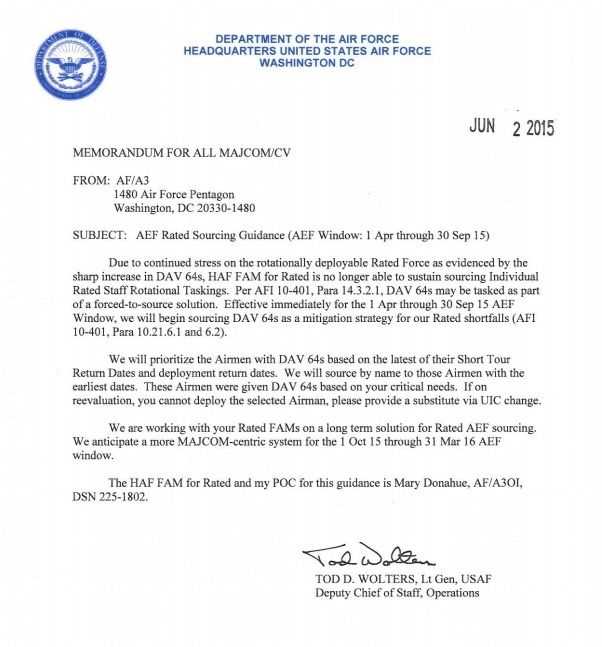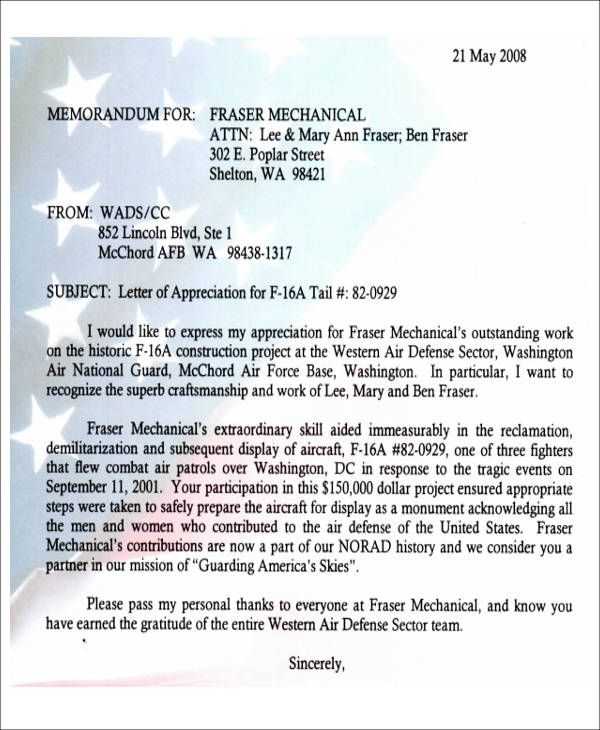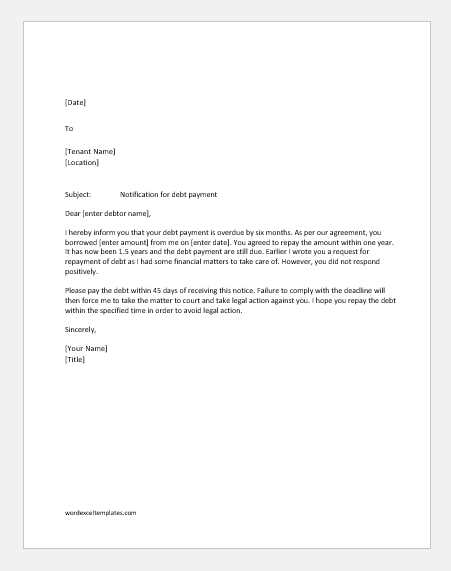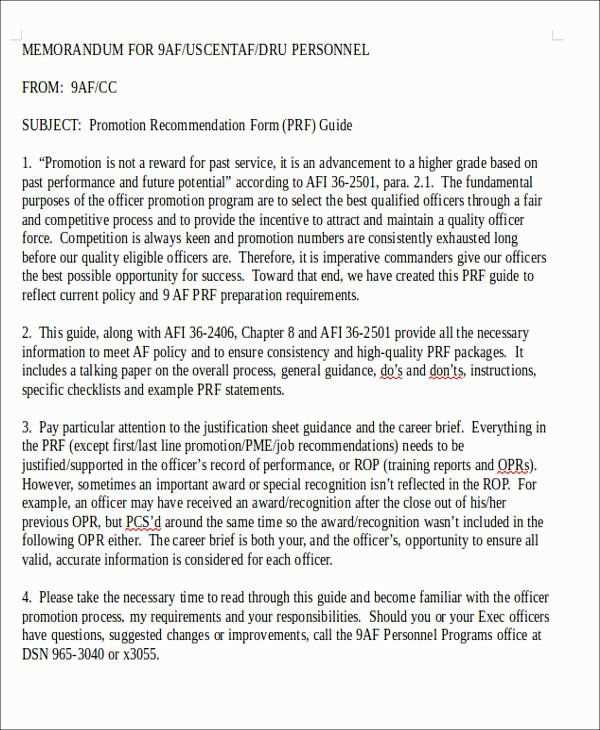Air force letter of reprimand template

A Letter of Reprimand (LOR) is a formal written communication used by the Air Force to address unacceptable behavior or performance. This document serves as a corrective tool aimed at guiding service members toward improvement while maintaining the standards of the Air Force. It is crucial that the LOR is clear, concise, and respectful, while also outlining the specific issues at hand.
Start by clearly stating the purpose of the letter. The first section should describe the specific behavior or action that led to the reprimand. This could include misconduct, failure to meet expectations, or any violation of policies or regulations. Be direct and factual when describing the event, avoiding any ambiguous language that could lead to confusion or misinterpretation.
In the following section, detail the impact of the behavior or performance on the unit, mission, or team. Explain how the action affected the Air Force’s objectives or overall operations. It is important to connect the individual’s actions with the broader goals of the organization, as this helps the recipient understand the significance of their behavior.
Conclude the letter with a clear statement of expectations moving forward. Outline what corrective actions are required, whether it be additional training, improved performance, or other steps to demonstrate commitment to the Air Force’s standards. Include a reminder of the consequences if the behavior continues, but maintain a tone that encourages growth and accountability.
Here is the revised version:
Start with a clear and direct statement of the issue. Keep the language simple and to the point. Avoid emotional or subjective terms that could escalate the situation. Focus on the specific actions that led to the reprimand and the necessary changes moving forward.
For example:
| Issue | Action Taken |
|---|---|
| Failure to follow standard operating procedures | Failure to properly secure equipment during field operations, resulting in unnecessary delays. |
| Lack of attention to detail | Neglecting required checks and inspections, leading to a missed opportunity for early problem detection. |
End with clear expectations for future behavior and the consequences if the situation is not corrected. Set a follow-up plan and make sure the recipient understands the importance of the correction. Use a straightforward and positive tone, focusing on growth and improvement.
Example closure:
| Expectation | Consequence |
|---|---|
| Follow all procedures thoroughly and ensure thorough equipment inspections | Failure to comply will result in further disciplinary actions. |
| Demonstrate more proactive attention to detail in operations | Repeated errors will result in more severe consequences. |
End with a reminder that this is an opportunity for personal and professional growth, stressing the importance of meeting expectations moving forward.
- Air Force Letter of Reprimand Template
Ensure clarity and professionalism when drafting an Air Force Letter of Reprimand. The document should address the issue concisely while detailing the behavior, the consequences, and the expectations moving forward.
Structure of the Letter

The letter should be clear, direct, and focused on the violation or misconduct. Include the following sections:
| Section | Description |
|---|---|
| Heading | Include the title “Letter of Reprimand” followed by the recipient’s name, rank, and position. |
| Introduction | Provide a brief explanation of the situation leading to the reprimand. Be specific about the date, time, and place of the incident. |
| Violation | Describe the action or behavior that warrants the reprimand. Cite relevant regulations or policies that were violated. |
| Impact | Explain how the behavior affected the team, unit, or mission. |
| Corrective Action | State what is expected from the individual to prevent future incidents. Mention any additional training, counseling, or other corrective measures required. |
| Conclusion | Reaffirm the consequences if the behavior persists and remind the recipient of the standards expected of them. |
Sample Reprimand Template
Here’s a basic structure for an Air Force Letter of Reprimand:
[Date] [Rank] [Name] [Position] [Unit] Dear [Rank] [Name], This letter serves as a formal reprimand for your actions on [date of incident]. On this occasion, you violated [specific regulation or directive], when [describe the action or behavior]. Your actions were unprofessional and undermined the mission and the unit. The behavior displayed is inconsistent with the standards of conduct expected from a member of the [Branch of Service] and negatively impacted the team. As a result, [describe any specific consequences or repercussions, if applicable]. Moving forward, you are expected to [describe corrective actions]. Failure to comply with these expectations could result in further disciplinary actions. Respectfully, [Name] [Rank] [Position]
Adjust the template to suit the specifics of the incident and the individual. Keep the tone respectful but firm to maintain the seriousness of the matter while encouraging improvement.
Begin with a clear and direct statement of the issue. Mention the specific incident or behavior that led to the reprimand. Avoid vague language; describe the actions in detail to avoid ambiguity.
Introduction
In the first paragraph, introduce the purpose of the letter. Specify the date, time, and place of the event, and briefly summarize the nature of the infraction. State the individual’s name, rank, and duty position to provide context.
Details of the Incident

Provide a thorough description of the actions or behavior that led to the reprimand. Reference any applicable regulations, orders, or policies that were violated. Present the facts in a neutral and objective manner, focusing on the individual’s conduct and the consequences it had on their team or mission.
Conclude with a clear statement of the consequences or expected corrective actions. This ensures the recipient understands the impact of their behavior and the steps they need to take moving forward.
Each reprimand issued in the Air Force must clearly outline specific facts and a timeline of events leading to the action. This ensures accountability and clarity in addressing misconduct. Be precise in identifying the violations, referencing exact rules, regulations, or directives that were breached.
Details of the Incident
In the first section, describe the incident in detail. Include dates, locations, and any individuals involved. This description should be factual and without ambiguity, showing how the actions violated Air Force policies.
Violation of Standards
Clarify which specific standards, whether written or unwritten, were violated. Refer to official Air Force regulations, the Uniform Code of Military Justice (UCMJ), or applicable instructions. This ensures the reprimand is grounded in official guidelines and not subjective opinions.
Consequences and Impact should follow, outlining the impact of the actions. Specify how the behavior affected the unit’s mission, the integrity of the service, or the morale of fellow personnel. It’s important to relate the violation to its broader consequences in military operations.
Conclude with a clear statement of expectations for the individual’s future behavior, emphasizing corrective actions and possible future consequences if the misconduct repeats. This provides direction for improvement and underscores the seriousness of the matter.
One common mistake is failing to clearly identify the specific behavior or action that led to the reprimand. Vague or general language makes it harder for the recipient to understand what needs to be corrected. Always focus on precise examples of the inappropriate behavior.
- Using ambiguous language: Avoid using words like “always” or “never” unless the behavior is a consistent pattern. Stick to facts and observable actions to prevent misinterpretation.
- Failure to include the impact: It’s important to describe how the behavior affected the team, mission, or work environment. Not addressing the consequences can diminish the significance of the reprimand.
- Ignoring corrective action: A reprimand should always include a clear expectation for improvement. Failing to state how the recipient can correct their actions misses an opportunity for growth and accountability.
- Making it personal: Keep the reprimand focused on actions and behavior, not the individual. Personal attacks can escalate tensions and reduce the effectiveness of the reprimand.
- Inconsistent tone: Maintaining a professional, neutral tone is key. A reprimand should not come across as overly harsh or overly lenient. Find a balance that reflects seriousness without becoming confrontational.
- Delaying the reprimand: Address the issue promptly to ensure that the recipient can reflect on the situation and correct it before it becomes a recurring problem.
By avoiding these mistakes, you can ensure that your reprimand is clear, professional, and constructive, leading to better outcomes for all parties involved.
Proper Tone and Language for an Air Force Letter
Keep the tone of the letter formal, respectful, and clear. Focus on delivering the message with precision and professionalism. Acknowledge the behavior or incident without being overly harsh or lenient. Stay factual and avoid emotional language. When addressing the individual, maintain a tone that is corrective rather than punitive, and use language that encourages improvement rather than alienation.
Be Direct and Clear

Use straightforward language to avoid any ambiguity. State the issue or concern directly, and support your points with relevant facts and examples. Avoid flowery language or unnecessary details that could distract from the main message.
Maintain Professionalism Throughout
While the letter may address a negative issue, it should not reflect personal animosity. Use neutral, professional phrases and avoid derogatory or insulting language. The goal is to correct behavior, not to disparage the individual. Stay focused on the actions and how they can be improved.
A reprimand can lead to several professional consequences, impacting both the service member’s career and reputation within the Air Force. First, it is important to note that a reprimand is a formal acknowledgment of misconduct, which is recorded in the service member’s personnel file.
Immediate Impact
The most immediate effect of a reprimand is a noticeable change in a service member’s record. This can influence performance reviews, promotions, and future assignments. Reprimands often signal a lapse in discipline, which could be reflected in evaluations, hindering career advancement opportunities.
Long-Term Repercussions
While a reprimand may not immediately result in discharge or severe punishment, its long-term impact can be significant. The record of the reprimand may remain for years, possibly influencing higher-level evaluations or future leadership positions. Repeated reprimands could lead to more severe actions, including possible separation from service.
Service members who receive a reprimand must take proactive steps to demonstrate their commitment to improving conduct and performance. This shows accountability and may help mitigate the long-term effects on their career. Acknowledging mistakes, adhering to corrective measures, and maintaining professionalism in future conduct are essential to recovering from the consequences of a reprimand.
After issuing a letter of reprimand, follow these key steps to ensure proper documentation and improve future behavior.
- Ensure Documentation is Complete: File a copy of the reprimand letter in the individual’s personnel record. Include any supporting evidence such as reports, emails, or witness statements that led to the reprimand.
- Monitor Behavior and Performance: Continue to observe the employee’s actions and performance. If there are no immediate improvements, consider follow-up conversations or additional corrective actions.
- Offer Support or Resources: Address any underlying issues that may have contributed to the behavior. Provide resources like training, mentoring, or counseling if appropriate.
- Set Clear Expectations for Improvement: Clearly outline what changes are expected in the individual’s behavior and performance. Set realistic timelines for progress.
- Follow Up Regularly: Schedule regular check-ins to review progress. Keep a written record of these follow-up meetings to track improvements or lack thereof.
- Consider Further Action if Necessary: If behavior does not improve, evaluate if additional steps, such as a suspension or termination, are needed. Ensure all actions are consistent with the organization’s policies.
Address specific actions or behaviors that led to the reprimand. Outline the conduct in clear terms, with a focus on factual descriptions. Avoid using generalities and ensure that each point is directly related to the incident. Include dates, locations, and any supporting details to provide context and clarity.
Clarify Expectations and Consequences
State the standards that were violated. Describe the expected behavior and how the individual fell short. Outline the potential consequences of continued misconduct or further violations. This helps the individual understand the seriousness of the issue and what is at stake.
Provide a Path for Improvement
Offer a concrete plan for corrective action. Suggest ways the individual can rectify the behavior, such as additional training or specific goals to meet. Reinforce the importance of personal accountability and the steps required to demonstrate improvement.